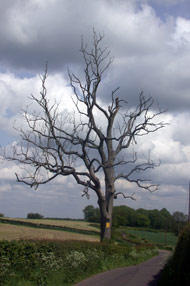Ancient and Veteran Tree Management:
The range of ancient and veteran tree management techniques including:
- Retrenchment pruning incorporating phased reduction of the tree to alleviate any structural instabilities and stimulate the process of retrenchment;
- Veteranisation techniques using destructive pruning to create new veteran features or enhance existing ones, with the associated biological and aesthetical benefits, these methods may also be used to bridge habitat gaps;
- Pollarding of younger trees to improve the continuity in the pollards already existing, maintaining the sustainability of habitat for co-evolutionary species;
- Restoration pruning of old redundant or lapsed pollards to reduce unpredictable structural failure eventually stabilising the tree close to the original pollard form, ensuring the continuity of habitat opportunities;
- Natural fracture pruning techniques including coronet cuts often used in conjunction with the above specialist pruning methods to give a more natural aesthetic to reduced trees in a wild context and attempt to produce new growth stimulated by the exposure of a larger surface area of cambium.
Decaying Wood Habitat Construction:
ArborEcology as a company is pioneering the commercial use or decaying wood timber resurrection, includes storm damaged trees or trees requiring felling due to large civil engineering projects such as road schemes. Often the timber used contains features with good potential to provide habitat for bats and other arboreal species, but additional features are also created to enhance the diversity offered.
The creation of decaying wood habitats such as resurrected trunks, aerial features and a diversity of log piles can be used to enhance existing sites or as part of a new scheme in the buffer zone around the edge, or to add a new feature to the landscape mosaic. Resurrected timber features can also be incorporated within landscape corridors to enhance the connectivity of the broader landscape for a greater diversity of organisms, while also offering transient, roosting and nesting, habitats for mobile species such as small terrestrial mammals, birds and bats.
Download this page as a pdf
Back to Contracting
For more information e-mail: contracting@arborecology.co.uk |
